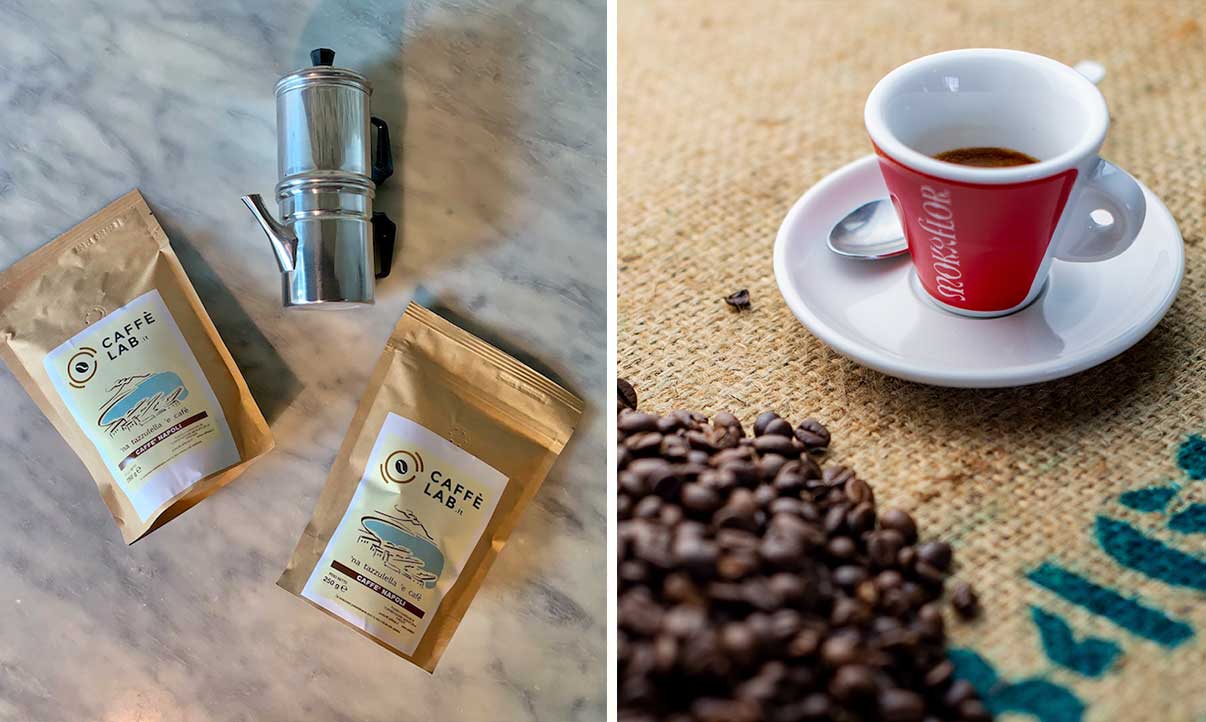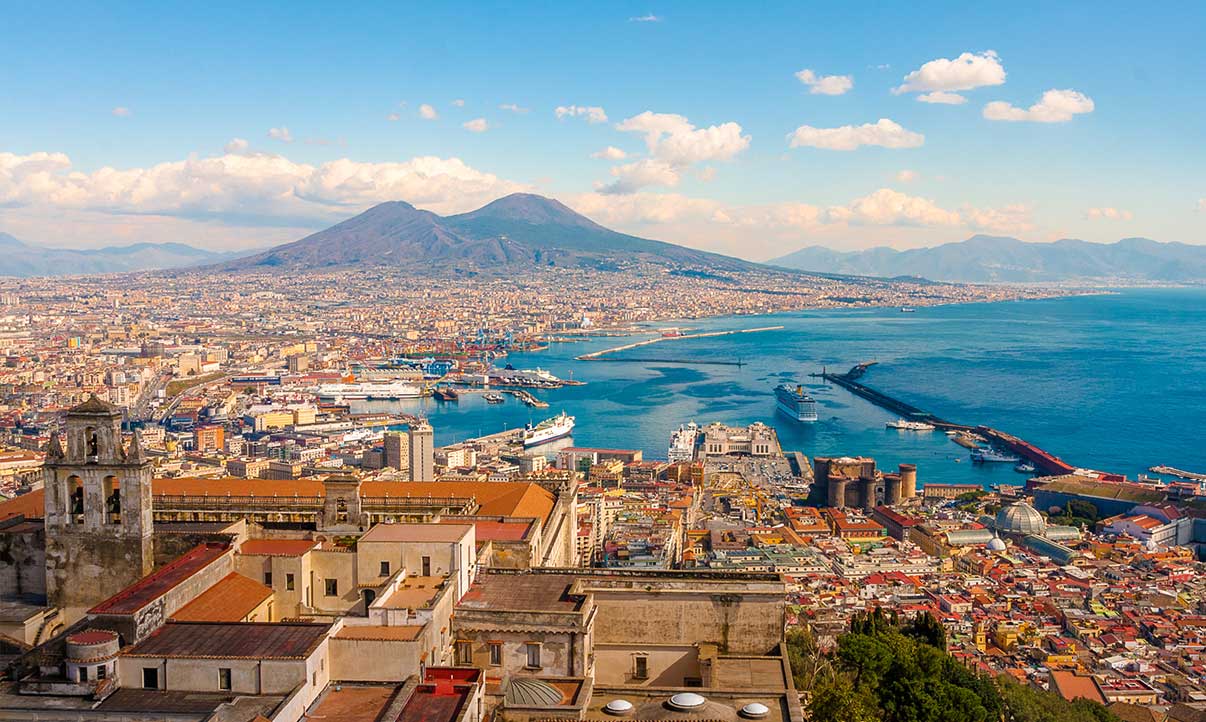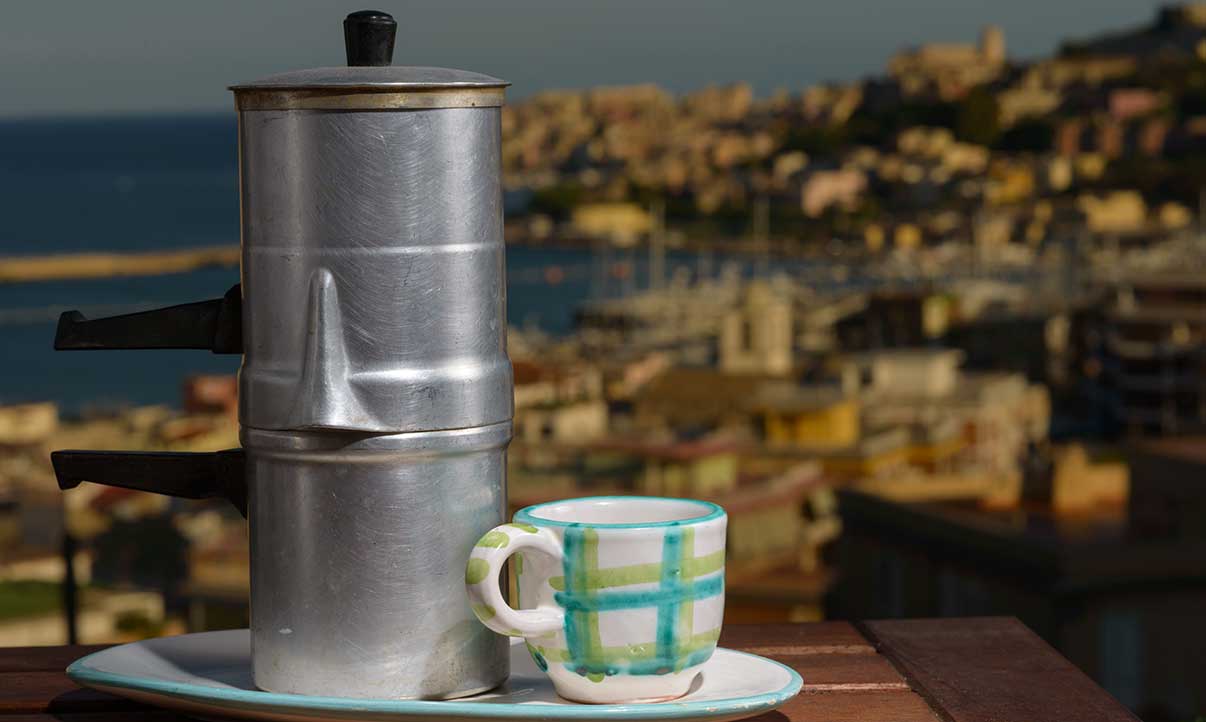
One of the most famous sketches by Eduardo De Filippo, one of the greatest authors of Italian theater, shows him standing on his balcony while waiting for the coffee in his “cuccumella” (the Neapolitan “moka”) to be ready. Meanwhile, he tells his balcony neighbor about the pleasure of making his own coffee (even roasting the coffee beans himself): a moment of “poetry” that grants those who practice it “a certain serenity of spirit”

As he extols the happiness of taking a break and sipping an excellent coffee, he minutely and painstakingly describes his method of preparing this historic method of coffee extraction, an identifying object of Neapolitan and Italian culture: the Neapolitan “cuccumella”.
Naples and coffee
The history of coffee in Naples began in the 1700s when coffee trade in Europe started expanding. Naples, an important seaport, quickly became a center for coffee importation. In a short time, the first shops selling coffee began to appear in the city’s alleys. The first Italian “coffee shop” was born precisely in Naples, where coffee was sold in roasted beans.
Initially, coffee was considered a luxury item and was effectively only associated with the use made of it by bars. Over time, its popularity increased, and Neapolitan artisans began to produce the first copper coffee makers, the “cuccumelle” (a diminutive of cuccuma, “copper or terracotta vase”): they were handmade and characterized by their drop-shaped form with a spout and a wooden handle.
From the end of the 1800s, aluminum became the material with which they were produced, lowering production costs, and allowing coffee to be more widely used in households on a daily basis.

The Neapolitan “cuccumella”: how to prepare it
Its operation is different from that of the classic Moka. We could define it as the “Italian filter coffee” since it does not use the pressure generated by steam to push water through the coffee but exclusively the force of gravity.
To start the preparation, it is necessary to fill the tank (the part without a spout) with water; take the portafilter and fill it with coarsely ground coffee compared to the Moka; screw on the filter and insert it into the top part of the machine (the one with the spout). Attach the two parts and put it on the fire. Once the boiling temperature is reached, steam will begin to come out of the small hole in the tank. This means that it’s time to turn off the fire and flip the coffee maker. The extraction has started.
If you prefer a less bitter coffee, you could start the extraction by turning off the fire a few seconds before boiling. Even better would be to fill the tank with water already at 92°-96°C or put only the tank part on the flame to limit the contact of the ground coffee with the high temperatures that could burn it.

The ritual of Neapolitan coffee concludes by pouring the coffee into the unmistakable Neapolitan cup: low, flared, wide, thick, very thick, to fully savor this coffee.
We suggest using our Caffelab Neapolitan coffee blend with the cuccuma. Caffèlab has created an ideal blend for those who want to try this traditional Italian coffee brewing method. The blend is a classic, with an intense, creamy, and full-bodied taste. Our Neapolitan Coffee Blend was created to become the highlight of this traditional Italian coffee experience, with an intense aroma, syrupy body, and strong, persistent taste.

